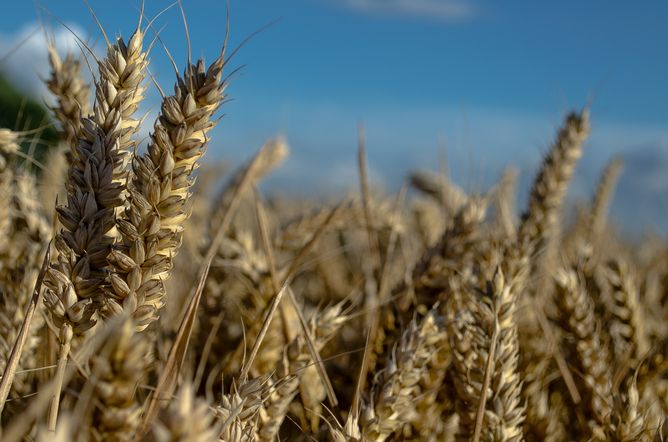
Prize for 480 New Varieties of Wheat

This article was originally published at The Conversation. The publication contributed the article to Live Science's Expert Voices: Op-Ed & Insights.
Improving wheat is a major challenge for agricultural scientists. The world’s population continues to grow – and so does its appetite. Sanjaya Rajaram, winner of the 2014 World Food Prize, used an innovative breeding technique to develop 480 new wheat varieties. Rajaram’s varieties are high-yielding yet resistant to diseases and stresses, which allows them to thrive in a range of environments. Across the world, scientists are currently exploring a range of strategies to increase wheat yield.
At a global level, we get 20% of our calories and protein from wheat. Growing demand and limited agricultural land means that the only way to increase the amount of food we can produce is more crops per unit area of land.
Increasing the yield of all our major cereal crops – maize, rice and wheat, in that order – is vital, but wheat poses a special challenge. Bread wheat, which accounts for 95% of the wheat we grow, is hexaploid. This means that it contains three genomes, each with two sets of chromosomes. Each of these three genomes comes from a different wild grass. These grasses combined to give the bread wheat we know today.
The trouble is that this giant genome makes bread wheat genetically very different to its wild relatives, so it cannot be easily breed with related grasses to create new varieties. This means that the genome of wheat is restricted to a small pool compared to many other cereal crops. This limits the potential for improving wheat yield by conventional breeding, in which different varieties are crossed together to give new combinations of traits.
Plant scientists at the National Institute of Agricultural Botany in the UK, are trying to create “synthetic” wheat by breeding bread wheat with the ancient grasses it is related to. This doesn’t happen readily in the wild because of the different genome structures, but their work could increase the availability of novel genes and therefore generate new characteristics for selection by breeding.
The photosynthesis research team at Rothamsted Research, also in the UK, is trying a different tactic for increasing wheat yield. The Rothamsted group is part of an international wheat consortium which aims to improve various aspects of photosynthesis, such as leaf structure and enzyme characteristics, in order to boost yield.
Sign up for the Live Science daily newsletter now
Get the world’s most fascinating discoveries delivered straight to your inbox.
Efficient photosynthesis is important for high yield: it is the process by which plants convert the sun’s energy into sugars for growth and storage. In wheat, like in other crops, this process results in more energy-rich grains. The Rothamsted group aims to select wheat varieties with high photosynthetic rates – in addition to traits which breeders conventionally look for, such as healthy grains – in order to increase plant yield.
In his award-winning work at the International Maize and Wheat Improvement Centre in Mexico, Rajaram successfully developed 480 new wheat varieties by crossing winter and spring wheats. These two classes of wheat have distinct genepools, so crossing them created more genetic variation and therefore greater scope for breeding wheat with desirable characteristics.
It is not just the increasing world population that puts pressure on global food supply. Climate change continues to wreak havoc with weather systems. More than ever, we need crops that can resist fluctuating environmental conditions and maintain their yield. Rajaram’s work has generated wheat varieties which maintain their yield under environmental and biological stresses. This will be the key to safeguarding our wheat crop in the years ahead.
Angela White does not work for, consult to, own shares in or receive funding from any company or organisation that would benefit from this article, and has no relevant affiliations.
This article was originally published on The Conversation. Read the original article. Follow all of the Expert Voices issues and debates — and become part of the discussion — on Facebook, Twitter and Google +. The views expressed are those of the author and do not necessarily reflect the views of the publisher. This version of the article was originally published on Live Science.












